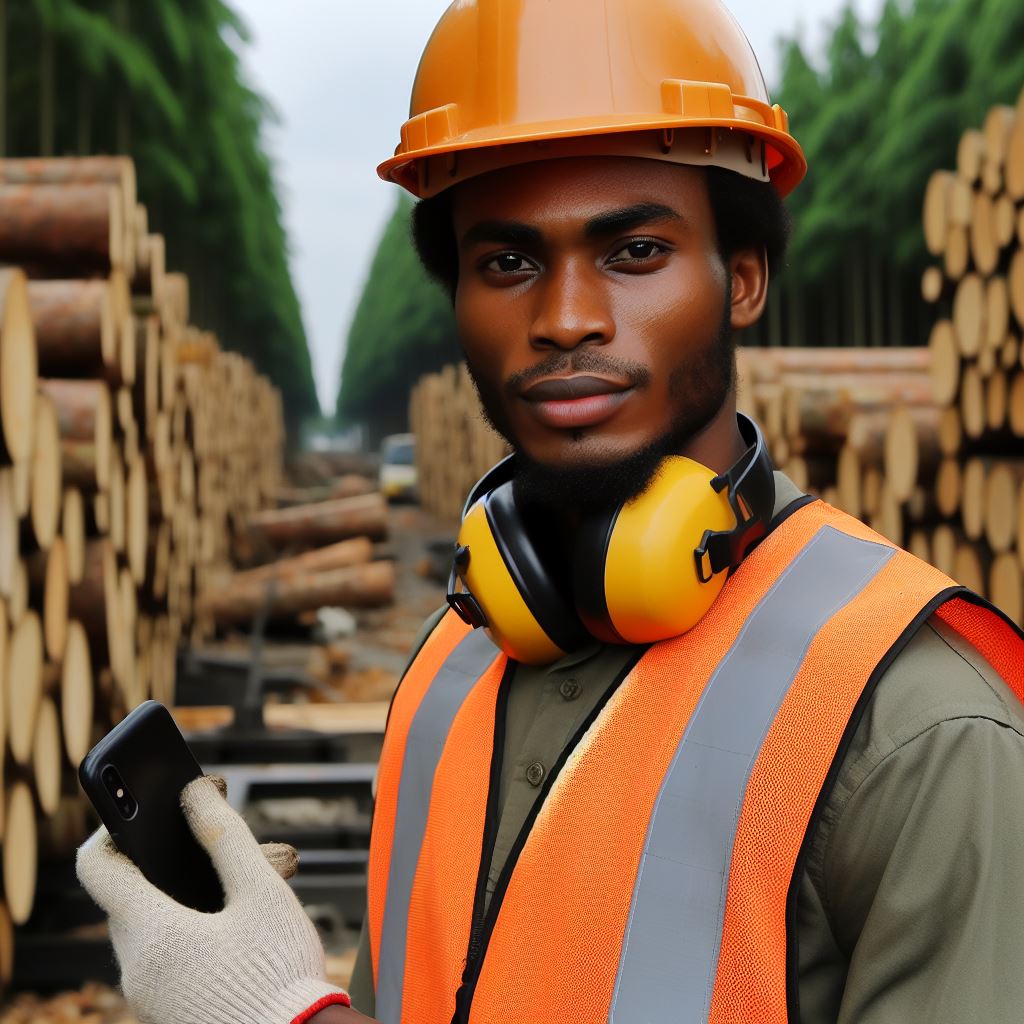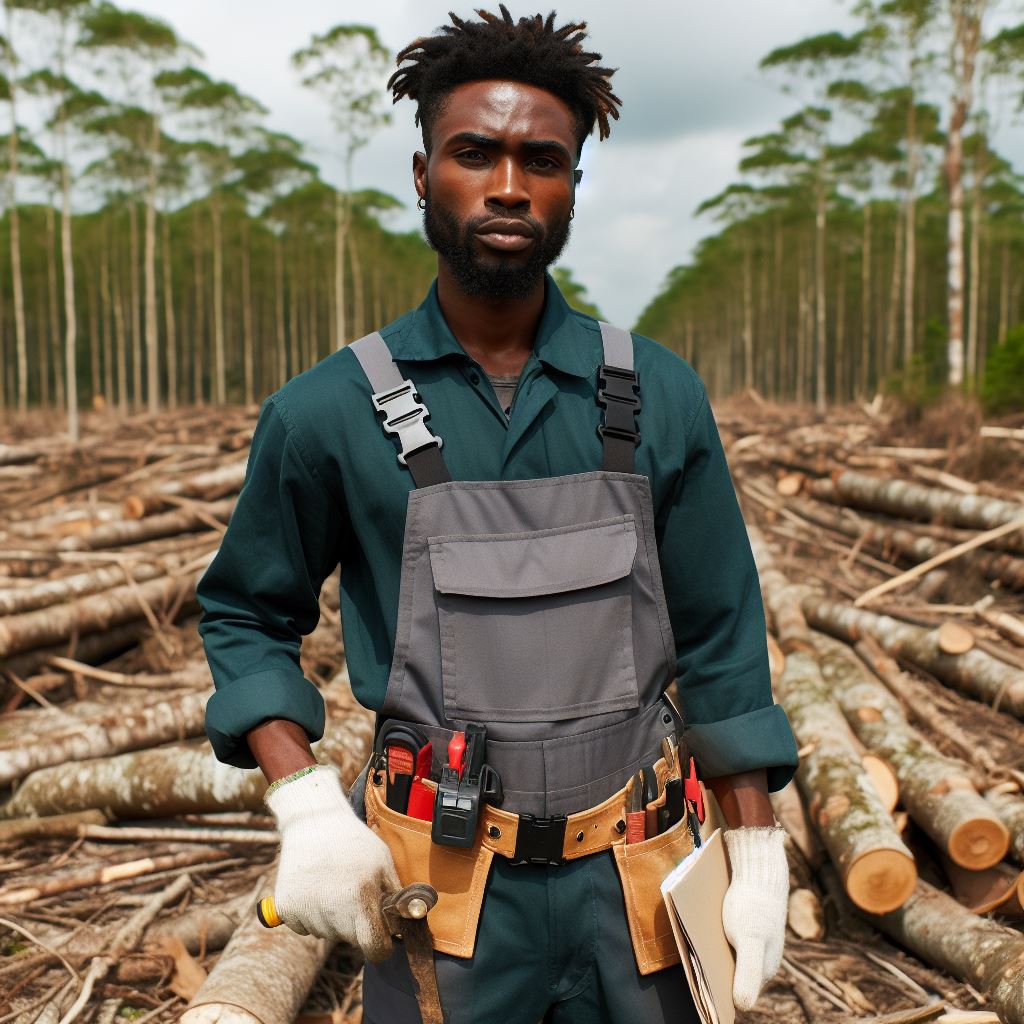Introduction
Community Involvement and Participation in Forestry Projects: Forestry projects in Nigeria are essential for the conservation and management of the country’s forest resources.
These projects aim to ensure the sustainable use of forests while protecting biodiversity and ecosystem services.
Communities play a pivotal role in these projects, as they are directly affected by the outcomes.
Their involvement and participation are crucial for the success and long-term sustainability of forestry initiatives.
Communities in Nigeria rely heavily on forests for their livelihoods, including subsistence agriculture, fuelwood, and non-timber forest products.
Therefore, their engagement in forestry projects ensures that their needs and perspectives are considered.
Moreover, involving communities in decision-making processes promotes ownership and a sense of responsibility among them, leading to more effective and sustainable implementation of projects.
Apart from protecting their livelihoods, community involvement enhances the social, economic, and environmental aspects of forestry projects.
Engaging communities helps promote awareness and knowledge about sustainable forest management practices, which can lead to improved forest biodiversity and reduced deforestation.
Their active participation in tree planting activities and forest protection initiatives contributes to carbon sequestration, climate change mitigation, and sustainable land use.
In fact, community involvement and participation in forestry projects in Nigeria are crucial for their success and effectiveness.
Engaging communities not only protects their livelihoods but also fosters sustainable forest management and contributes to broader environmental and societal benefits.
Collaboration and active participation from all stakeholders are vital for the long-term sustainability of these projects.
The Role of Communities in Forestry Projects
Forestry projects in Nigeria stand at a crucial juncture where community involvement can redefine their success.
Engaging local communities is not merely a choice; it is an imperative for sustainable and impactful forestry initiatives.
Definition and Significance of Community Involvement
Community involvement in forestry projects refers to the active engagement of local residents in planning, implementing, and sustaining initiatives that aim to conserve and manage forest resources.
The significance of this involvement cannot be overstated. Local communities possess invaluable traditional knowledge about the ecosystems they inhabit.
Their understanding of the intricate balance between flora and fauna, handed down through generations, is a reservoir of wisdom that, when integrated into forestry projects, enhances their effectiveness.
Moreover, involving communities ensures that projects align with the cultural and social dynamics of the region.
This not only fosters a sense of ownership but also minimizes the risk of inadvertently causing harm to the delicate balance of the local environment.
Benefits of Community Participation in Forestry Projects
The benefits of community participation in forestry projects are multifaceted. Firstly, it promotes sustainable resource management.
Communities, being direct beneficiaries of forests, are naturally inclined towards practices that ensure long-term ecological health.
By involving them in decision-making processes, projects can tap into this inherent conservation ethic, ensuring that resources are utilized judiciously, with an eye on the future.
Secondly, community participation fosters social cohesion. Forestry projects become a rallying point for collective action, bringing residents together for a common cause.
This not only strengthens community bonds but also creates a shared sense of responsibility for the environment.
This sense of ownership acts as a deterrent against illegal logging and other activities detrimental to the forests.
In short, community involvement in forestry projects is not a mere nicety; it is the cornerstone of sustainable and impactful initiatives.
By recognizing the importance of local knowledge and fostering a sense of ownership, these projects can become true catalysts for positive change in Nigeria’s forestry landscape.
Read: The Intersection: Family Values and Consumer Behavior in Nigeria
Challenges to community involvement and participation
Community involvement and participation in forestry projects in Nigeria face various challenges that hinder their effectiveness and sustainability.
These challenges can be categorized into limited awareness and understanding, lack of resources and infrastructure, socio-cultural factors, and government policies and regulations.
Limited awareness and understanding of forestry projects
One of the major challenges faced by communities in Nigeria is the limited awareness and understanding of forestry projects.
Many community members are not aware of the importance and benefits of these projects, leading to a lack of interest and motivation to participate.
Without proper knowledge and understanding, they are unable to make informed decisions or actively engage in project activities.
Lack of resources and infrastructure
Another challenge is the lack of resources and infrastructure within the communities.
Adequate resources such as financial support, equipment, and training are essential for effective participation.
However, most communities in Nigeria lack these resources, making it difficult for them to actively engage in forestry projects.
Additionally, the absence of proper infrastructure such as roads and processing facilities further hinders their involvement.
Socio-cultural factors Affecting Community Engagement
Socio-cultural factors play a significant role in community involvement and participation.
In Nigeria, cultural beliefs, norms, and practices affect the willingness and ability of communities to engage in forestry projects.
Transform Your Career with Expert Guidance
Get personalized mentorship consulting that’s tailored to your unique path. Our expert advice is actionable and exclusive.
Get StartedTraditional practices, land tenure systems, and gender roles may restrict the participation of certain groups or impede the implementation of sustainable forestry practices.
Overcoming these socio-cultural barriers requires careful consideration and collaboration with community members to ensure inclusivity and cultural sensitivity.
Government policies and regulations
The existing government policies and regulations in Nigeria pose challenges to community involvement and participation in forestry projects.
In some cases, communities may face restrictive laws or bureaucratic processes that limit their decision-making power and control over natural resources.
Lack of transparency, accountability, and consultation in policy development can undermine community ownership and hinder their active participation.
To address these challenges and promote effective community involvement and participation in forestry projects, various actions can be taken.
First and foremost, awareness campaigns and educational programs should be implemented to ensure that communities have a clear understanding of the benefits and importance of forestry projects.
Providing sufficient resources and infrastructure, such as financial support, equipment, and training, is crucial to enabling communities to actively participate.
Collaborative efforts between government agencies, NGOs, and community leaders are needed to address socio-cultural factors and ensure inclusivity.
Lastly, reviewing and revising government policies and regulations to enhance community engagement and decision-making processes will help create an enabling environment for sustainable forestry practices.
By addressing these challenges and implementing targeted interventions, Nigeria can harness the full potential of community involvement and participation in forestry projects, leading to improved environmental conservation, livelihoods, and overall sustainable development.
Read: Pioneers of Family & Consumer Sciences Education in Nigeria

Find Out More: Educational Programs for Nigerian Horticulture
Strategies to enhance community involvement and participation
Building awareness and knowledge among communities
- Organize workshops and training sessions to educate communities about the importance of forestry projects.
- Develop information materials, such as brochures and leaflets, to disseminate relevant information to the community.
- Use social media platforms and local radio stations to reach a wider audience and raise awareness.
- Invite experts and professionals to give presentations and share their knowledge with the community.
Strengthening community institutions and capacity-building
- Establish community-based organizations or committees to actively engage and represent the community’s interests.
- Provide training and capacity-building programs to empower community members and enhance their skills.
- Promote leadership development within the community to ensure effective decision-making and accountability.
- Support the establishment of cooperatives and self-help groups to promote collective action and participation.
Promoting stakeholder collaboration and partnerships
- Facilitate meetings and forums that bring together different stakeholders, including government agencies and NGOs.
- Encourage the participation of local businesses and industries in forestry projects through partnerships.
- Promote dialogue and collaboration between communities to share experiences and best practices.
- Establish working groups with representatives from diverse sectors to ensure inclusive decision-making.
Providing financial and technical support to communities
- Explore funding opportunities from government grants, international organizations, and private donors.
- Offer technical assistance and expertise to help communities in planning and implementing forestry projects.
- Establish revolving funds or micro-credit schemes to provide financial support for community initiatives.
- Create incentives and rewards for communities that actively participate and contribute to forestry projects.
Read: Evolution of Family Sciences Curricula in Nigerian Universities
See Related Content: Success Stories: Nigerian Pasture Management Professionals
You Might Also Like: Introduction to Pasture and Range Management in Nigeria
Successful examples of community involvement and participation in forestry projects
Case study 1: Community-led reforestation project in a rural village
In a small rural village in Nigeria, the community took the initiative to establish a reforestation project.
The villagers organized themselves to plant trees in degraded areas, and they actively participated in every stage of the project.
They identified the tree species suitable for the region and developed a sustainable planting plan.
The community members took turns to monitor the growth and health of the planted trees.
The project’s success can be attributed to the strong determination and ownership shown by the community.
Through their active involvement, a significant portion of the degraded land has now been restored, providing numerous ecological benefits.
Moreover, the community has experienced economic advantages through the sustainable use of forest resources.
Case study 2: Collaboration between community and government in forest conservation
In another instance, a community in Nigeria collaborated with government agencies to conserve a threatened forest.
The community recognized the importance of the forest’s biodiversity and its role in providing ecosystem services.
They reached out to the government and expressed their willingness to participate in the conservation efforts.
The government responded positively, creating a partnership that involved joint patrolling and monitoring activities.
The collaboration also included capacity building programs to equip community members with conservation knowledge and skills.
As a result, the forest’s degradation has significantly decreased, and the biodiversity has shown signs of recovery.
The partnership between the community and government has strengthened and continues to ensure the sustainable management of the forest.
Case study 3: Sustainable community-based logging practices
One inspiring example of community involvement is the establishment of sustainable community-based logging practices.
In a particular community, the members recognized the importance of balancing economic benefits with forest conservation.
They formed a logging cooperative and devised guidelines for sustainable timber harvesting.
Strict regulations were implemented, such as selective logging and reforestation obligations.
The community ensured that only mature trees were harvested, leaving young or endangered species untouched.
This approach resulted in the regeneration of the forest, promoting biodiversity and preventing deforestation.
The community’s commitment to sustainable logging practices has not only preserved their forest but also provided them with a steady source of income.
These case studies demonstrate the power of community involvement and participation in forestry projects in Nigeria.
When communities take ownership and actively participate, the success of such projects is magnified.
By collaborating with government agencies, communities can amplify their conservation efforts and ensure long-term sustainability.
Through sustainable practices, communities can simultaneously improve their livelihoods and protect the environment for future generations.
Read: Consumer Sciences: Bridging Tradition and Modernity in Nigeria
Delve into the Subject: Pasture Management Workshops and Training in Nigeria
Conclusion
Community involvement and participation are crucial for the success and sustainability of forestry projects in Nigeria.
It ensures that local communities have a stake in the management and decision-making process, leading to positive outcomes for both the environment and the community.
Throughout this blog post, we explored various challenges faced in community involvement and participation in forestry projects in Nigeria.
These challenges include lack of awareness, limited access to resources, and inadequate capacity building.
However, we also discussed several strategies to overcome these challenges, such as promoting education and awareness, providing training and skills development, and promoting stakeholder collaboration and partnerships.
In order to ensure the long-term success and sustainability of forestry projects in Nigeria, there is a need for increased community engagement.
It is important for government agencies, non-governmental organizations, and other stakeholders to actively involve local communities in decision-making processes, provide them with the necessary resources and capacity building, and promote their ownership and empowerment.
Together, we can contribute to the preservation and sustainable management of Nigeria’s forests for present and future generations.




